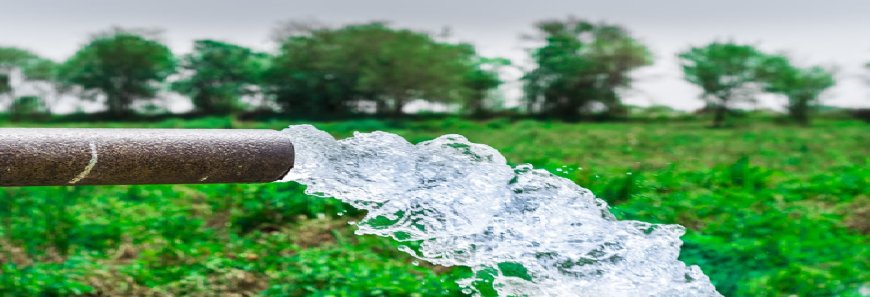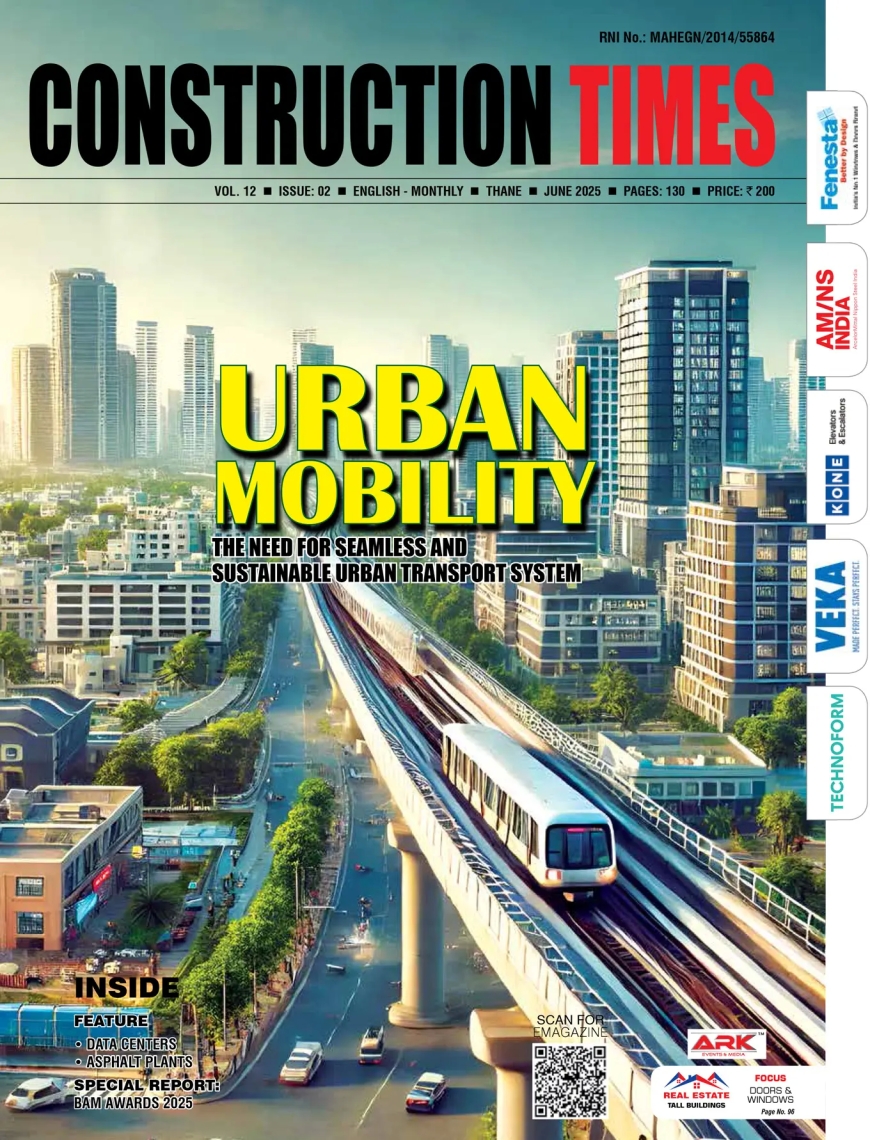JAL SHAKTI: THE WAY FORWARD FOR WATER SUSTAINABILITY
Water availability in India is decreasing fast with the increasing population and change in weather patterns. The depleting water resources add more trouble. In this scenario, Construction Times explores the way forward for water sustainability in the long run. Water is an essential commodity for life and its use in a sustainable way has become

Water availability in India is decreasing fast with the increasing population and change in weather patterns. The depleting water resources add more trouble. In this scenario, Construction Times explores the way forward for water sustainability in the long run.
Water is an essential commodity for life and its use in a sustainable way has become key in the current scenario. Government is giving utmost importance to the storage, supply and use of water through its various policy initiatives. Initiatives like Jal Jeevan Mission (JJM) will provide water to everyone in the country by 2024, and more projects are also in the pipeline for recycling and reuse of wastewater and desalination of seawater for potable water.
Considering the importance of the ever-increasing demand for water, the government has combined its various departments connected with water and waste water. The Government of India has created the Ministry of Jal Shakti by integrating the Department of Drinking Water and Sanitation and the Department of Water Resources River Development and Ganga Rejuvenation, with a goal of integrated water resources management under one umbrella, so that all the issues relating to water are dealt with in a holistic manner. This Ministry will also look after rural sanitation and take forward the Swachh Bharat Mission, ensuring that the achievements made under the Mission are sustained and in furtherance, arrangements be made for safe disposal of solid and liquid waste in rural areas.
Under the new Ministry of Jal Shakti, the Central Government has introduced various schemes that will promote the effective and efficient utilization of water and waste water. The major schemes include Swachh Bharat Mission (with rural sanitation coverage), Jal Jeevan Mission (Household with tap water connection), Pradhan Mantri Krishi Sinchayee Yojana (irrigation), and Namami Gange (river water treatment and sewage treatment).
The Department of Drinking Water and Sanitation provides technical and financial assistance to the states to provide safe and adequate drinking water to rural India with focus on service delivery.
Water infra development
Government of India has done a commendable job under the flagship scheme of Jal Jeevan Mission (JJM). With a massive budget of Rs 6.7 lakh crore, JJM has seen a significant progress in last three years in the coverage of tap water facilities to rural households. The JJM scheme was launched in August 2019, since then almost 63.5 million additional rural household have been provided with functional water tap connections (FHTC). The JJM progress dashboard suggest that the scheme is being implemented on a mission mode in all Indian states and as on May 25, 2022, it has covered all households in 71,626 panchayats spread across 1,51,039 villages of 108 districts in the country with assured tap water supply. The coverage of tap water connection on pan India basis have increased to reach 50.10% from just 16.92% at the beginning of this scheme, thus covering 95.82 million rural households out of a total of 191.27 million in the country.
In August 2021, the Government of India, the Central Water Commission (CWC), government representatives from 10 participating states signed an agreement with the World Bank for a $250 million project to support the Indian Government's long-term dam safety programme and improve safety and performance of existing dams across various states. The Second Dam Rehabilitation and Improvement Project (DRIP-2) will strengthen dam safety with adopting global experience and innovative technologies while also building dam safety guidelines. The project will be implemented in ~120 dams across Chhattisgarh, Gujarat, Kerala, Madhya Pradesh, Maharashtra, Manipur, Meghalaya, Odisha, Rajasthan and Tamil Nadu, and at the national level through the CWC. There are several other water security and infrastructure development schemes working for water source augmentation, groundwater recharge, rain harvesting and irrigation with technological innovation.
Challenges in water distribution systems
Water sector is vital towards building a social infrastructure for the country. The available water infrastructure is insufficient to meet the growing socio-economic developmental goals. Over the years, significant efforts have been taken to provide safe and clean drinking water to urban and rural populations. However, aging infrastructure has become the most challenging concern. Increasing population, higher economic and industrial activities, rising demands, poor infrastructure maintenance, lack of rehabilitation, slow adoption of advanced technologies, depletion and contamination of ground water sources, water supply thefts, high level of non-revenue water are some of the challenges that needs urgent attention and redressal in a time-bound manner.
Population growth in urban areas, water scarcity, climate change effect, water supply risk, inadequate regulatory framework and aging infrastructure will remain some of the main challenges to be faced by the water industry. The industry must also consider how it will address the escalating energy costs, environmental risk, infrastructure security, restructuring of institutions, distressed groundwater situation, and equitable supply amidst increased demand. Then there are financial issues related to operation and maintenance of the massive water network in the country.
In a circular economy, wastewater is treated and reused so that it becomes a resource after proper treatment that can improve the availability of water for populations, industry, and agriculture. Water reuse can reduce the need for fresh water withdrawals, while decreasing the volume of effluents discharged into water bodies. But in India, only about 30% of the total generated wastewater is treated and reuse facilities are almost negligible except a few examples. The agriculture sector that uses 80% of fresh water mostly extracted from groundwater sources could be provided reclaimed water to reduce their dependence on freshwater sources.
Subhash Sethi, Chairman, SPML Infra, comments on the measures for a better water distribution system, “We need to consider an integrated approach to water supply and wastewater management in the country with reliability and financial sustainability. Water industry should be supported for taking up projects for water loss reduction, improvement in non-revenue-water and groundwater recharge projects. Government should encourage private participation in water sector and provide adequate financial resources for building better water and wastewater infrastructure.” According to him, capacity building programs and improving water governance system based on stakeholders' participation will benefit in the long run. “Water industry has to embrace technological innovation like other industries to endure the present and emerging challenges. Other industries have adopted the information and digital technologies much earlier reaping the benefits. There is a growing momentum to address the issues of water industry through innovation that can be deployed in the water sector and nations across the globe are experimenting with modern technology,” he adds.
Regarding the challenges faced by the water infrastructure sector, Dr. Harish Sharma, Executive Director, Rudrabhishek Enterprises Ltd (REPL), observes,
“The major challenge lies in the efficiency of the distribution system. Due to inefficient designs and poor maintenance, millions of litres of water are wasted every year. Proper planning, good quality material, and regular maintenance are needed to have an efficient water supply.”
Opportunities galore!
In the wastewater recycling and sewage treatment, there are ample opportunities evolving. Nagesh Veeturi, Executive Director – Civil, KEC International, says, “Interestingly, the tertiary treatment of domestic sewage for use in industries is being adopted in many cities. Going forward, we anticipate this to be a compulsive factor for all STPs. With the rate at which freshwater resources are getting depleted, it would not be a surprise when we shall be forced to use tertiary-treated water for drinking water purposes in future, like it is done in Singapore and some of the developed countries.”
According to Sethi, the dedicated schemes like Jal Jeevan Mission (Rural) having allocated budget of Rs 3.6 lakh crore up to 2024, Jal Jeevan Mission (Urban) having an exclusive budget of Rs 2.87 lakh crore for the duration of 2021-2026, Namami Gange programme with Rs 20,000 crore are some of the flagships programmes that will continue for a longer period. There are other schemes like Pradhan Mantri Krishi Sinchayee Yojana – Har Khetko Pani (Rs 9,050 crore), Dam Rehabilitation and Improvement Project (DRIP) Phase 2 & 3 (Rs 10,200 crore) for the period of 2020-2031, National River Linking Project (Rs 22,495 crore), Atal Mission for Rejuvenation and Urban Transformation (AMRUT 2.0) with a massive allocation of Rs 2.99 lakh crore for five years up to 2026, National Hydrology Programme with Rs 3,680 crore up to year 2024, and Atal Bhujal Yojana with Rs 6,000 crore up to year 2025 are the important government schemes that promise a better prospect for water infrastructure development companies and contractors for the next few years' time.
Towards a sustainable future
Water sustainability is imperative for any country globally. Ajay Hans, MD & CEO, Welspun Enterprises, says, “For India, it has to be accorded the highest priority given our increasing population and corresponding demand. As discussed above, thus far only 50% of our rural households have access to tap water. We clearly have a long way to go and we are happy to see that the government has ensured that creation of water infrastructure is put on MISSION MODE to achieve time-bound results.”
Water and wastewater treatment are key to sustainability. Industries must strive to innovate to improve the responsible and judicious use of water and minimise the water footprint. Abhijit Dani, Vice President and Business Unit Head – Process Equipment and Modularisation Business Vertical, Praj Industries, points out, “The Indian industries should invest in innovative and sustainable technology required for wastewater treatment and recycle-reuse. Projects that resonate with this year's theme of World Water Day, ‘Groundwater: Making the Invisible Visible' should be pursued.”
Going forward, wastewater recycling and rainwater harvesting will play a major role in the sustainable use of water.
Hits: 3







